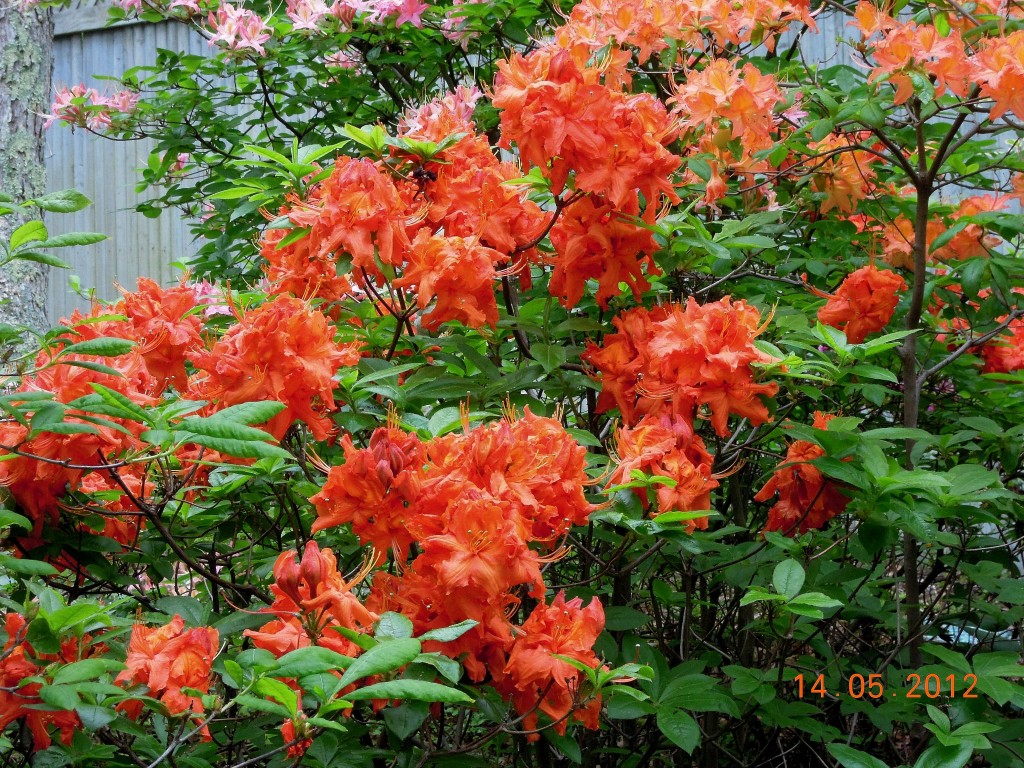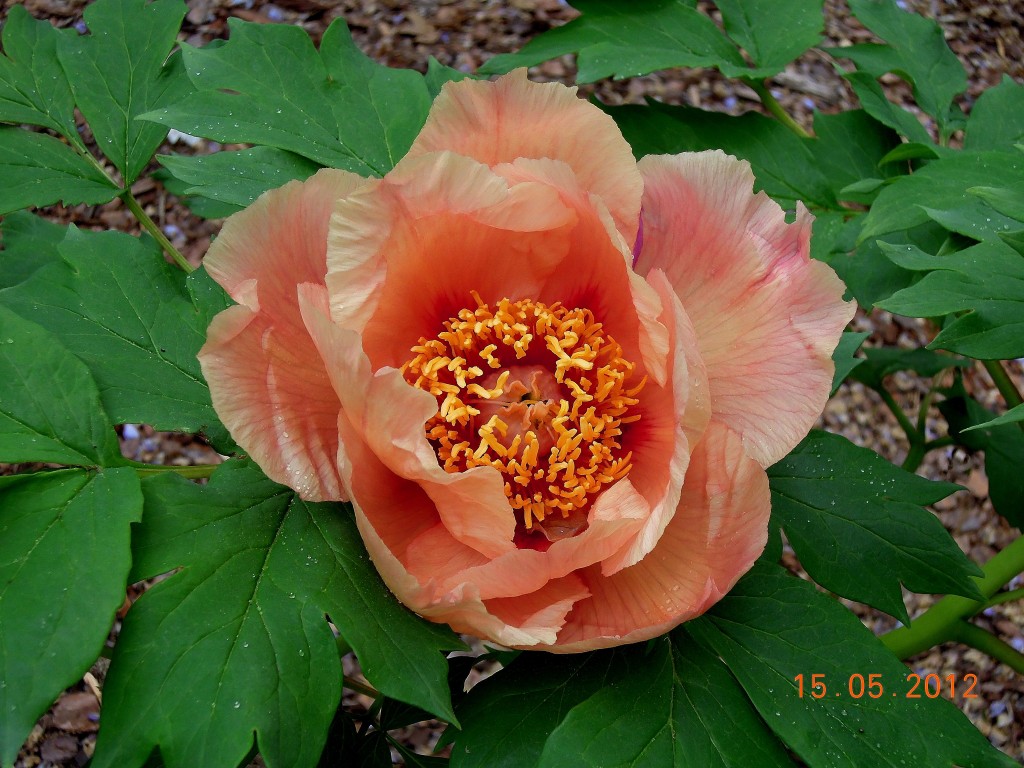At the beginning of May I found a very unusual and interesting growth on my azalea, Rhododendron ‘Gibraltar’. It looked like a baseball-size, smooth, light green fruit. Wow, I thought, a HUGE seedpod.
So wrong!
Jim Fry, an azalea guru, set me straight. My azalea had a fungus disease, Exobasidium vaccinii (or E. japonicum), otherwise known as azalea leaf gall. During cool wet Spring weather the fungus enters the tissue of plants, incubates over winter, and the fleshy galls appear the following Spring. When the galls turn white—looking as though they have been dusted with flour— they are actually coated with fungal spores which can infect other plants. Cut them off before they reach this stage.
The fungus doesn’t kill the plant or cause serious damage but the galls do replace flowers.While a single plant sporting a bouquet of galls might be quite a garden showpiece, don’t be taken in. The fungus spores are airborne takeover artists.
Reportedly, the French solved the problem of galls the French way. They eat them. Adventurous diners, the French. Me, not so much.
R.’ Gibraltar’ is a gorgeous deciduous orange azalea. One of the best. Don’t let the possibility of galls stop you from having it in your garden.
And forgive me as I digress a bit to recommend another orange May beauty, my favorite tree peony, Paeonia ‘Nike’. Exquisite flowers and fragrance! (Available from Klehm’s Song Sparrow Nursery).

